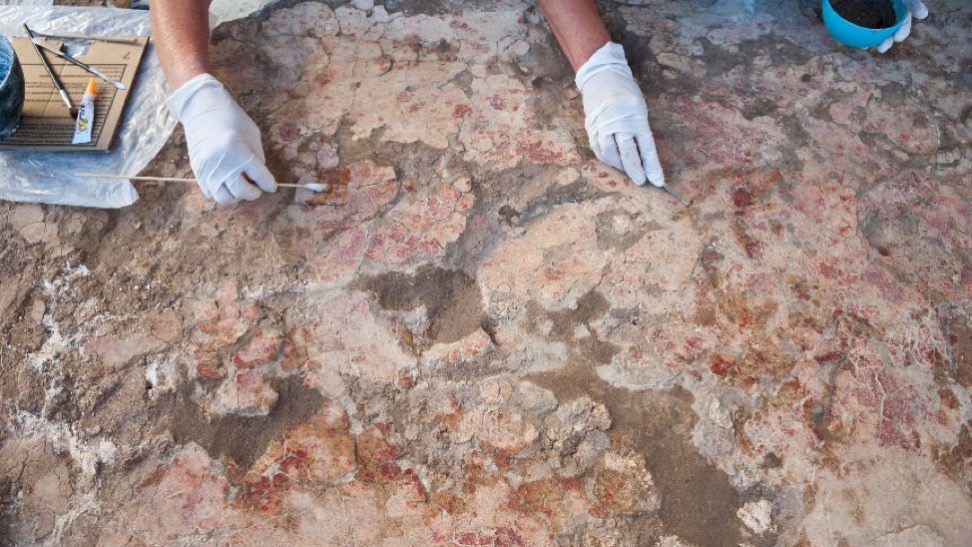
Utica Project. Research of the Phoenician-Punic city
According to Strabo, Utica was, after Carthage, the most important Phoenician city in Libya (Strabo XVII, 3, 13). The geographical location of Utica as a bridge between East and West, at the bottom of a sheltered bay, justifies the early foundation of a contemporary colonial settlement. The results obtained by the project are of extraordinary interest in the field of world Phoenician-Punic studies. The excavation campaigns carried out in Utica in 2012-2019 have confirmed the exceptional importance of Utica for the understanding of the beginnings of the Phoenician colonization in the West and for making a fundamental contribution to the debate on the chronology of the beginning of the Iron Age in the Mediterranean, with broad historical implications. The temples of Utica are unique in the Western Mediterranean and their study and future musealization will be milestones of great scientific and cultural projection.

Period
IX Century B.C. to I Century A.D.
Institution
Universidad de Almería.
Web and social networks
Principal Investigator(s)
José Luis López Castro
Universidad de Almería, Spain
Imed Ben Jerbania
Institut National du Patrimoine, Tunisia
Location
Utica,Tunisia
LOCATION
RESULTS
- The most significant archaeological results obtained in the project consist, first of all, in the location of an architectural complex in the oldest area of occupation of the city dating back to the 9th century BC, making Utica the oldest Phoenician colonial settlement in the Mediterranean according to the calibrated C14 dates.
- Secondly, Hispano-Tunisian excavations have exhumed a large area in use from the 8th century BC to Roman times. In this area, the remains of two temples have been discovered, superimposed on each other, and associated with elements of Phoenician-Punic monumental architecture, unique for the time being in the Central and Western Mediterranean. As far as the oldest area is concerned, forming part of the Phoenician architectural complex, a 4 m deep ritual well has been located, filled with the remains of a collective banquet, which we can date with conventional archaeological chronology in the Middle Geometric period II, between 825/800 and 750 B.C.
- The constructive Phoenician remains located in the IX century B.C., are associated to Phoenician, Greek geometric and Sardinian archaeological material, of the same type to those that define the oldest Phoenician horizon documented in Huelva, in El Carambolo and in La Rebanadilla, in the airport of Malaga.
- The well was part of a complex composed of a large building preserved only in its northern half, which was in use in the ninth century BC, which are associated with the remains of metallurgical activities
- Finally, excavations have uncovered a monumental wall of ashlars provisionally dated in the 3rd and 2nd centuries BC which followed the same orientation as the Phoenician building and which we relate to a monumental building, possibly a temple.
It has been possible to verify that the organization of the space in Utica follows orthogonal patterns as it has already been shown in the urbanism of Cartago. Likewise, productive functions have been identified in this area by means of remains of metallurgical activity and a ceramic production oven in the VI-IV centuries B.C. Next to this area, two superimposed monumental temples were in use successively, from the VII and IV centuries B.C., of which the oldest is quite destroyed for the construction of the most recent one, which presents a better state of conservation, although it was partially destroyed as a consequence of an urban restructuring of the late Roman Republican period.
PICTURES
- Radiocarbon dating reveals Mongolia’s earliest pottery predates previous estimates by 2,000 years (Phys.org 23/04/2025) - 30 April, 2025
- The Megalithic Sepulcher of Küsterberg, a Large 5500-year-old Monument in Germany, Restored (La Brújula Verde 28/04/2025) - 30 April, 2025
- Archaeologists find wreck of large medieval boat in Barcelona (The Guardian 25/04/2025) - 29 April, 2025

























